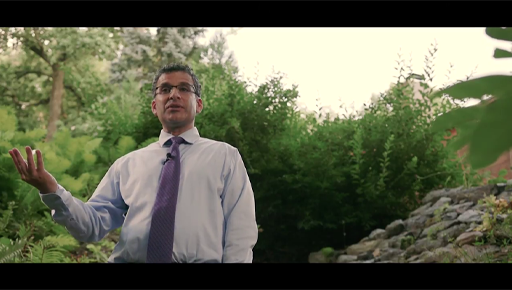1 Family, friends and other adults
Addressing mental health issues is far from a passive process on the part of the young person concerned. Professional support strategies rely on the young person being able to engage actively in the process, as so much of it is about developing relationships with the self and others. As you will see in the case of cognitive behavioural therapy (CBT), which you will look at in Session 8, young people can improve their mental health by challenging and adjusting the ways they think about events and their emotional responses to their experiences.
Dr Ken Ginsberg, specialist in adolescent medicine, advocates supporting young people to develop the skills they need to develop competence in life. You heard him in Session 5 talking about the ‘Seven Cs of Resilience’. You’ll hear more from him in the next activity.
Activity _unit8.1.1 Activity 1: Nurturing and supporting in adolescence
In Session 5 you were introduced to the Seven Cs of Resilience, by Dr. Ken Ginsburg. In the video it was clear that resilience is not one clear definable thing but something that is more complex and influenced by a range of factors, both internal and external to the young person. The topic of Session 7 is about identifying sources of support, so this time we want you to watch the video again, this time focusing this time on ways in which those around the young person can contribute to their resilience.
Complete the table below as you listen to the video again, this time making a note of all the things that those around a young person can help to support a young person’s sense of resilience.

Transcript: Video 2 (repeated from Session 5): The Seven Cs of Resilience: Dr. Ken Ginsburg introduces his Seven Cs of Resilience: Confidence, Competence, Connection, Character, Contribution, Coping, and Control. Content provided courtesy of the Center for Parent and Teen Communication, Children's Hospital of Philadelphia. © 2018 The Children’s Hospital of Philadelphia
| 1. Confidence | |
| 2. Competence | |
| 3. Connection | |
| 4. Character | |
| 5. Contribution | |
| 6. Coping | |
| 7. Control |
Discussion
| 1. Confidence | Those around a young person can help by building their self esteem. While also ensuring not to overly place pressure on them to perform. |
| 2. Competence | Those around the young person can notice what skills they have and comment positively on those already in place and further influence the development of new skills. |
| 3. Connection | Having circles of adults who ‘see’ them, and who are reliable can help young people connect. It also gives them security to meet challenges that arise. |
| 4. Character | Those around the young person can help to provide boundaries for them and connections with family. |
| 5. Contribution | Helping young people know that they matter but also knowing that they can reach out to others for a helping hand is a clear part of contribution. But it’s important to know that this is done ‘in kind’ and that there is no pity that comes with it. |
| 7. Coping | Telling young people what not to do by shaming them doesn’t work, so those around the young person need to work with them to help them learn better ways to cope by modelling this behaviour. |
| 8. Control | Young people begin to have a sense of control within their homes and watch how those around us teach us be in the world. Those around them can also teach them responsibility. |
